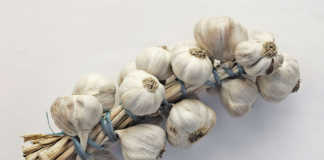
If this is the case on your land, spread kraal manure evenly over the surface to provide a ‘booster shot’ of nutrients.
To restore the soil to a healthy, productive condition, apply 250 wheelbarrow loads of manure per hectare, or one wheelbarrow load for every 40m² of land (roughly equivalent to an area six big paces wide and six big paces long).
A hectare covers 10 000m², roughly the size of a soccer field.
To determine the number of wheelbarrow loads of kraal manure needed, divide the area of your land by 40. In the previous issue, we showed you how to estimate the size of a land. Let’s assume that it is 4 900m². Dividing this by 40 gives 122,5 (say 123) wheelbarrow loads.
Once the soil is cured, keep it healthy by supplying the nutrients removed by your next crop. Do this before planting. Crops differ in the amount of nutrients they remove from the soil. Moreover, the higher the yield, the more nutrients are removed. Ask your extension officer for advice.
How much to apply, and when It is a good idea to apply kraal manure during winter, the fallow period for most crops.
This gives the manure enough time to decompose and release nutrients for crops planted in spring or summer. In areas where crops are grown in winter, apply manure in late spring, at least one month before planting the crop. Spread the recommended quantity evenly over the soil and work it in to a depth of 5cm to 10cm soon afterwards. (The previous issue had guidelines on application rates for key field and garden crops.)
Not enough manure? here’s the solution
If you have access to large quantities of manure, you can apply up to four times the recommended amounts and postpone the next application by up to four years without much yield loss. If you don’t have enough manure to apply at the recommended rate, you can band place or spot place the manure.
With band placing, a strip of manure is put in a furrow below or to the side of the seed, but never in contact with the seed. With spot placing, a small quantity of manure is positioned in a shallow hole below or to the side of every seed.
These methods concentrate the manure, and therefore the nutrients, close to the plants. This enables them to get to the nutrients easily while reducing the quantity of manure needed.
However, the fertility of the rest of the land will not be improved with these methods, so it is necessary to fertilise every planting.
Source: Van Averbeke, W and Yoganathan, S: ‘Using Kraal Manure as a Fertiliser’, department of agriculture and the Agricultural and Rural Development Research Institute, Fort Hare.












